
Growing evidence that precision medicine would save lives is what prompted each of the health systems covered in this article to adopt an aggressive program early. “This means improving care for our patients,” says Konstantinos N. Lazaridis, M.D., of Mayo Clinic. “It gives us more specific information about what causes illness and how.”
Each of these systems also reports that not only do they have ample justification to continue these programs, but through the data they’ve generated, they have new reasons as well.
And new players are jumping into the game. The Medical University of Carolina (MUSC) and Helix recently announced a strategic collaboration to develop a population genomics initiative called Our DNA SC. This large-scale program is designed to improve health care by integrating genetic data into clinical care and research. The program aims to enroll 100,000 patients in genetic testing over the next four years at no cost to patients.
Specialty centers, for rare disease, cancer, and pharmacogenomics, are also thriving, suggesting PM has turned an important corner. It’s here to stay, and spreading its wings.
Geisinger Health System
In 2007 Geisinger Health System launched its groundbreaking biobank MyCode, which links information from patient samples and electronic health records (EHR) for clinical and research use. Patients opt-in to MyCode by filling out an informed consent form that also allows follow-up for additional information. The EHR data goes back as far as 1997 for some patients, and a subset patients undergo exome sequencing through GHS’s collaboration with Regeneron Genetics Center for DNA sequencing.
“We were asking how we could get upstream; how could we get ahead of the disease process?” said Christa Lese Martin, Ph.D., chief scientific officer, at Geisinger Health System (GHS).
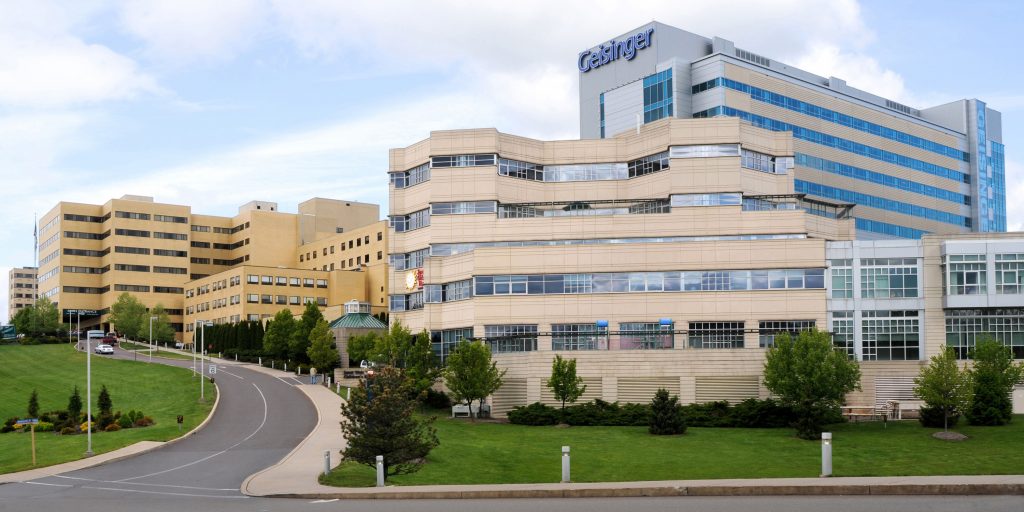 MyCode’s consent rate is around 70-80% and there are currently more almost 300,000 patients who have enrolled. “It is one of the world’s largest patient databanks,’ says Martin.
MyCode’s consent rate is around 70-80% and there are currently more almost 300,000 patients who have enrolled. “It is one of the world’s largest patient databanks,’ says Martin.
Since 2015, the system has been returning clinically actionable results to participants. “Patients feel they are learning information that will help them prevent disease,” says Martin. “Even if results show they are at risk for something, they can then monitor and improve their health proactively.”
MyCode also feeds important research at the health system. In one recent study, GHS researchers looked at using genomic screening for risk management and early detection for hereditary breast and ovarian cancer syndrome (HBOC), Lynch syndrome, and familial hypercholesterolemia (FH) (Buchanan, A. H., et al, Genetics in Medicine, June 3, 2020). These three indications have been recognized as being Tier 1, in terms of priority for screening by the Centers for Disease Control and Prevention (CDC).
This observational study reviewed data from 351 patients, 87% of whom (305) did not have a prior diagnosis of one of these indications. Of those 305 patients, 65% were found to have evidence of personal and/or family history of disease in their EHR. About 180 of those patients went on to risk management procedures. Thirteen percent (41/305) received a clinical diagnosis—10 had HBOC-associated lesions, five were diagnosed with Lynch-associated findings, and 26 had an FH variant.
In another study, GHS researchers looked at the value of screening for copy number variants (CNVs) associated with neuropsychiatric disorders (NPDs) (Martin, C. L., et al. JAMA Psychiatry, Sept. 2, 2020).
The frequency of 31 NPD-associated pathogenetic copy number variants (CNVs) were assessed was assessed in more than 90,500 patients for whom the team had exome and EHR data. A pathogenic CNV was found in 708 patients. Of those, only 5.8% (41) had a previous genetic diagnosis. Seventy percent of these patients (494) had a least 1 NPD-associated clinical symptom. After about 140 patients had been given their results, the researchers reported that responses included, “poignant reactions to learning a medical reason for lifelong cognitive and psychiatric disabilities.”
“A lot of our people are using this data now,” said Martin, “And we are not only putting it into PCP’s (primary care provider’s) hands, but working it into the medical school curriculum.”
GHS serves over a million patients, it includes nine hospital campuses, a health plan with more than half a million members, two research centers and, the Geisinger Commonwealth School of Medicine.
Intermountain Healthcare
Intermountain Healthcare is an integrated, not-for-profit health system based in Salt Lake City, Utah, with clinics, a medical group, affiliate networks, hospitals, homecare, telehealth, health insurance plans, and other services, along with wholly owned subsidiaries across the West, primarily in Utah, Idaho, and Nevada.
Some of the key issues at Intermountain Healthcare early on for their precision medicine program “…were continuous ‘build vs. buy’ evaluations,” wrote Whitney Mason, Clinical Genomics Director of Strategic Development, via email. “Additionally the selection of equipment, assays, and—most importantly—getting the right people on the team.”
The change wasn’t easy. “Mainstream adoption from physicians took some time and navigating competition with existing commercial solutions,” noted Mason. “We were hearing from providers that existing solutions weren’t meeting all their need, and it became important for us to focus on filling those gaps, while doing it in an efficient, cost-effective way for the larger system.”
In the end, a packaged solution did not meet Intermountain’s needs. Rather they built some pieces needed for their program and partnered for needed solutions.

The investment is already having tangible benefits. At Intermountain, more than 75% of patients with advanced cancer get new treatment options thanks to precision medicine.
“Physicians really appreciate having an in-house option for testing,” said Mason. To encourage this, the Intermountain team has been very open to feedback, taking extensive input from physicians, for example, in generating the cover-sheet for their genomic report. As Mason explained the report “… includes actionable information on the front page, where it is easy to find, understand, and implement.”
Reimbursement is a big hurdle for this entire field. So hospitals, including Intermountain, have been trying to demonstrate how useful, and cost effective, precision medicine can be.
To address this in 2018, Intermountain researchers collaborated on a study of precision oncology in advanced cancer patients. (Haslem, D.S., et al, Oncotarget, 2018). The team found that costs were significantly lower for patients who received targeted therapy aided by precision medicine compared with those who didn’t—$2,720 per week, versus $3,453 per week.
Patients and their families are very interested in topics such as the future of cancer treatment and how genetics can move that forward, Mason added, and Intermountain will continue to build around the programs it has established to fulfill the promise of genetics.
Mayo Clinic
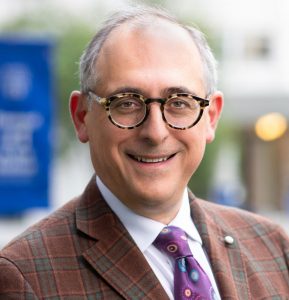
“This started almost ten years ago, but Mayo has been providing individualized care for about 150 years,” said Konstantinos N. Lazaridis, Executive Director of Mayo Clinic’s Center for individualized Medicine of its efforts to build a precision medicine program.
The system’s Individualized Medicine Clinical was established in 2012, and has served more than 7,500 patients since then. Its Program for Rare and Undiagnosed Diseases was launched in 2019 and currently has more than 25 clinics active across the Mayo system.
Lazaridis pointed out that more than 7,000 rare diseases affect nearly 30 million Americans. Many people spend years before they achieve a diagnosis. “The patients come with hope for healing, they come for answers to their questions, and they become strong partners,” he said.
Lazardis sees nothing but growth on the horizon, fueled by the new discoveries in genomics and the growing number of patients. “We are doubling the clinics,” he said, “and we are engaging more and more practitioners to work with us.”
Echoing his peers, he noted that the chief hurdle for. Precision medicine program is creating awareness among physicians and patients. “We need to make visible to patients and practitioners the impact and value this can have,” he said. Insurance companies, and payment for preventive genetic testing, are another hurdle.

Mayo is doing research to support this effort and its future. In one 2021 study, Mayo researchers compared universal genetic testing against guideline-directed targeted testing for patients with hereditary cancer syndrome. (Samadder, N. J., et al. JAMA Oncology, Dec. 17, 2020.)
More than 2,900 patients were included in the study. The researchers found that an 80-gene-plus NGS platform detected more heritable variants than a targeted panel based on current clinical guidelines.
In another study, Mayo researchers looked at the impact of translational research on clinical exome sequencing. (Klee, E.W., et al. Genetics in Medicine. March, 2021.) This study examined results from more than 1,100 patients with as yet undiagnosed diseases who received exome testing through Mayo Clinic from 2012 to 2018. More than 270 of these patients finally received a diagnosis based on the exome sequencing.
“The next step for us is to go above and beyond genetics, and to see how environmental exposures, diet, and other factors interact with genetics to affect health,” Lazaridis added.
Mayo Clinic has major campuses in Rochester, Scottsdale, Phoenix, and Jacksonville. It also has dozens of locations in several states.
NorthShore University Health System
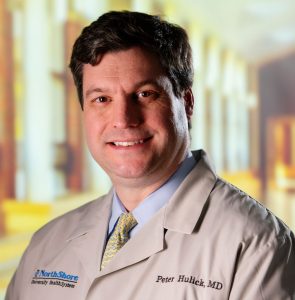
“Why does something work in one patient and not in another?” asked Peter Hulick, medical director of NorthShore University Heath System’s Mark R. Neaman Center for Personalized Medicine. That’s one of the key reasons NorthShore launched its precision medicine program around seven years ago. Hulick was named director of the Center in 2016.
The team started with pharmacogenomics, then in 2018 they launched a DNA 10k pilot program with Color Genomics that recruited 10,000 patients for genomic sequencing. An internal survey revealed that more than half of the doctors involved said the testing provided patients a clinical benefit. The program then extended to 30 additional NorthShore clinics, and began including polygenic risk scores for type 2 diabetes and coronary artery disease.
In April of this year, NorthShore and Sema4 announced a system-wide genomics program to help clinicians and patients prevent, detect, and treat diseases at an early stage.
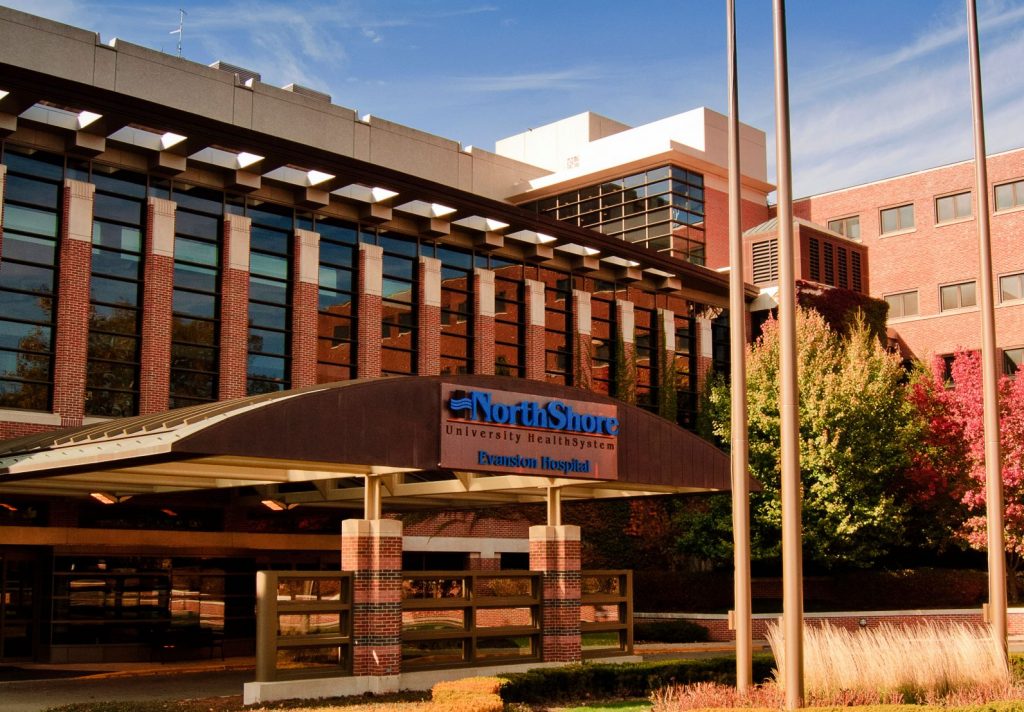 “A key question for us has been how do we unlock our data and drive early detection and treatment of disease,” said Hulick. “How do we simplify and make it easier to spot when someone had signals of a disease?
“A key question for us has been how do we unlock our data and drive early detection and treatment of disease,” said Hulick. “How do we simplify and make it easier to spot when someone had signals of a disease?
The alliance between NorthShore and healthcare analytics company Sema4 helps the health system integrate clinical and genomic information.
But there were other hurdles as well. “Organizing around genomic data was a big one. Deciding what genetic data to put in the electronic health record,” Hulick said. One of the most important steps was around how, and which, decision support system to use.
“What is next is bringing this together in a more digestible way, to determine what is the best step for the patient based on all the data,” added Hulick.
One of the key capabilities for supporting this type of endeavor is bioinformatics, and NorthShore has taken a lead in that. In a recent paper, of which Hulick is senior author. NorthShore researchers described a new software tool called Flype, a web-based bioinformatics platform that does a variety of critical services for a precisions medicine-oriented healthy system. (Helseth, D.L., et al, Am J of Med Gen, Oct. 22. 2020)..
Flype securely accepts data from a variety of sources, can send orders, can perform secondary analysis and annotation of NGS data, provides a central repository for all genomic variants, assists with tertiary analysis and clinical interpretation allows population frequency analysis, and updates variant annotation as literature knowledge evolves.
The NorthShore system, headquartered in Evanston, Ill., includes six hospitals located in Evanston, Glenbrook, Highland Park, Northwest Community, Skokie, and Swedish.
Specialty Precision Medicine Centers
While the number of health systems incorporating precision medicine into primary care grows, specialty clinics are also garnering a growing interest in the field. Oncology is the obvious leader, but rare diseases in children and pharmacogenomics are moving up fast.
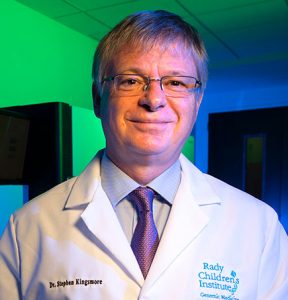
Rady Children’s Institute for Genomic Medicine is one standout, which is repeatedly in the headlines for using genomics to rapidly diagnose infants with rare diseases. ““The return on investment by Rady Children’s Institute for Genomic Medicine in rapid Whole Genome Sequencing (rWGS) is improved outcomes for children in neonatal and pediatric intensive care units,” said Stephen Kingsmore, MD, DSc, President and CEO of RCIGM. “The rewards are immediate answers for parents and genome-informed, targeted treatments for critically ill patients.”
On the other side of the U.S., Children’s Hospital of Philadelphia is likewise diagnosing as many infants as they can, early, through their Roberts Individualized Medicine Center.
Ian Krantz, M.D., a researcher at CHOP, notes that that the hospital has used genomics for years as a research tool. About seven to eight years ago a grant from the Roberts Foundation allowed them to start applying the technology directly to diagnosing children.
Their first target was rare diseases, “We have seen children who have visited ten specialists before coming here,” he said. But CHOP’s services quickly expanded. The practice has grown from 300 referrals per year to 2000, for children affected by such problems as heart defects, cleft palate, short stature and more.
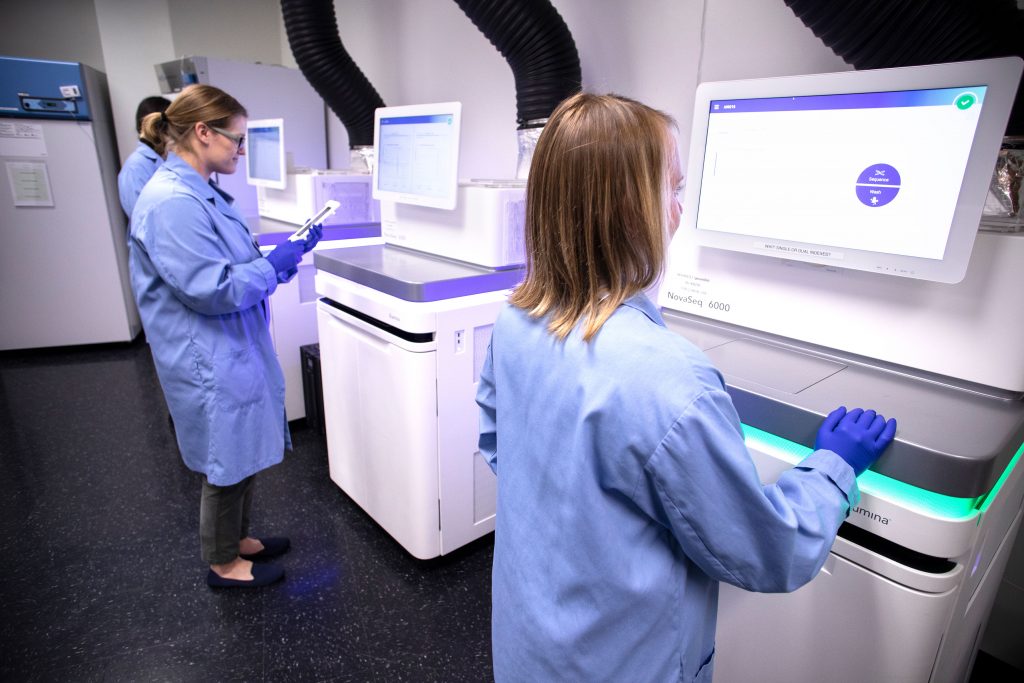
“We knew that this was going to be revolutionary, not just for rare diseases but for other conditions as well,” said Krantz. Epilepsy and hearing loss, he points out are not that rare, and involve 100s of genes.
University of Florida, meanwhile, is pioneering a pharmacogenomics (PGx) program. “Data from UF and multiple other sources points to a need to genotype for Plavix [clopidogrel],” said Larisa H. Cavallari PharmD, a professor in the UF department of Pharmacotherapy & Translational Research.
That was the first drug they started doing genetic testing for, since then they have added proton pump inhibitors, opioids, and more.
Cavallari points out that while PGx may have gotten a bad rap because of early case studies of warfarin, there may be a deeper layer there. “Those studies used a lot of African Americans, but they weren’t testing for the right variants in that populations,” she said.
The horizon for precision medicine
For those at the forefront of precision medicine, this is a turning point. For a long time, experts have pointed to a few examples of where genetic testing makes sense – Hereditary Breast and Ovarian Cancer Syndrome (HBOC), Lynch syndrome (LS), and Familial Hyphercholesterolemia (FH). But as the number of genetic variants and disease associations climbs, researchers are finding new uses for precision medicine.
There is still a need to prove to physicians and insurers that this is a useful field for new evidence. Multiple studies have shown that more lives can be saved with this data. Others, like that from Intermountain, cited above, show that there can be cost savings.
Research highlighted in this article points to new applications in neuropsychiatric disorders, type 2 diabetes, cardiovascular disease, and even opioid use. We are still far from the day where genetics plays a role in every day medical care, but these pioneers are making giant steps integrating genomics into medical care.













